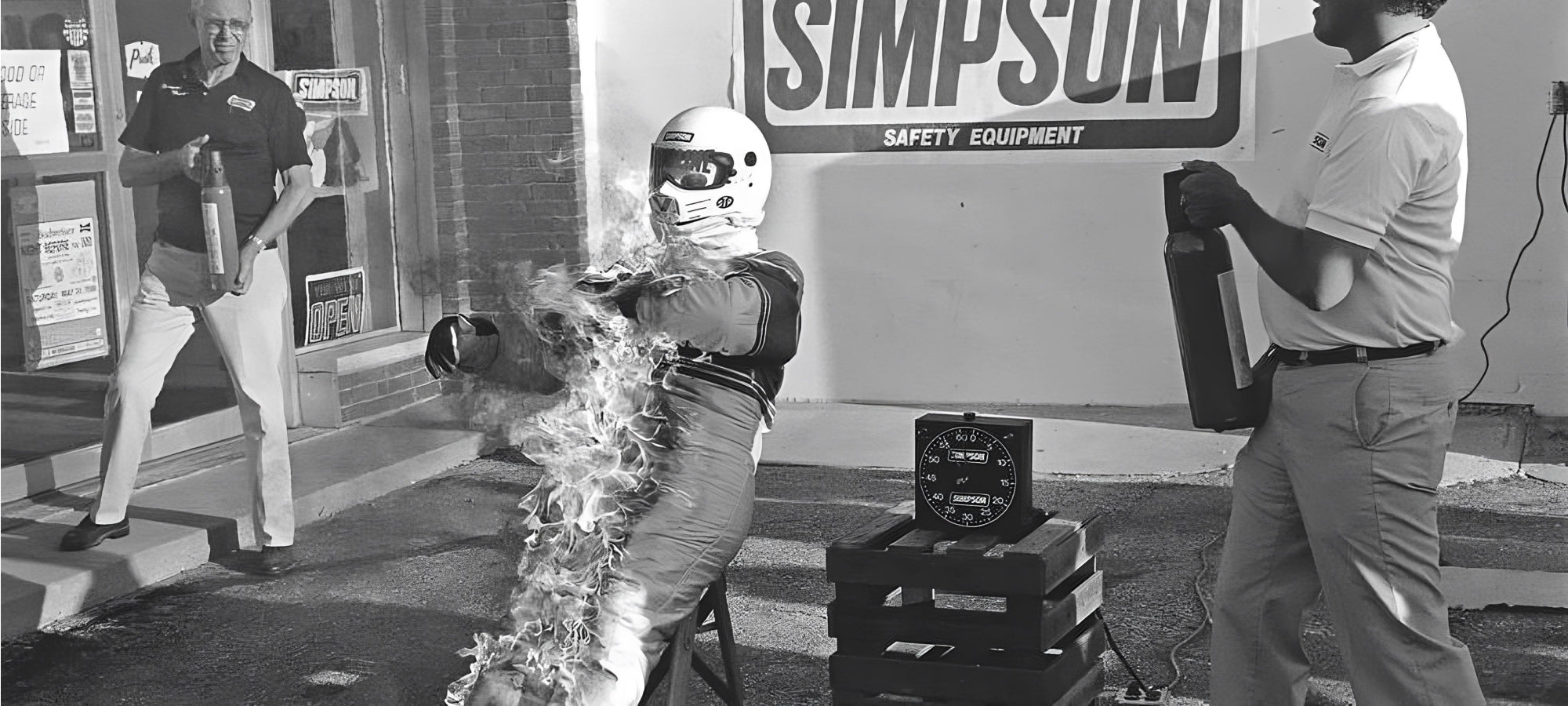Ever since 1966, every driver on a race track has worn at least one layer of Nomex when racing. The fabric was designed in the late 50s for DuPont by Wilfred Sweeney, originally meant to be used in space programs. The introduction of the fabric to motorsports came when Bill Simpson met with astronaut Pete Conrad. Conrad brought up Nomex and its advantages and benefits; leading to Simpson developing a company to provide Nomex overalls to all the Indianapolis 500 drivers of the 1966 season, except three of them.

Nomex is a polymer, more precisely a meta-aramid with a high molecular weight. Another aramid that is quite popular is Kevlar but instead of stopping bullets, Nomex stops flames. The first renditions of Nomex fabric had a spun yarn construction, similar to cotton. It then moved on top filament yarn as it lead to more customization options. Racing teams have always depended on sponsors and you bet they wanted to have their colors and logos on the new Nomex suits. This meant that despite performance and protection being the priority, aesthetics were paying the bills.

All motorsports wear is governed by sanctioning bodies, mainly FIA and SFI. So DuPont has to ensure that the fabric always meets their standards. Also, they have to take in consideration the comfort of the people wearing the garments, especially in the demanding environment of a racing car cockpit. This has lead to the fabric's weaving patterns developing into staple fibers, with the individual fibers being thinner than ever. For Nomex, the thinner the fiber, the higher the protection. This also means that the breathability and comfort of the garments has heavily improved.
The motorsports world was once again reminded of the importance of Nomex in the 2020 season of Formula 1. It had been over 30 years since the last fiery crash in the sport. In the year's Bahrain Grand Prix, Romain Grosjean crashed into the guardrails and his car immediately erupted in a ball of fire. Everyone stopped breathing for all the 27 seconds he was trapped in his now severed car, engulfed by flames. He came out with burns on his hands and consequentially missed his final race in F1. Under any normal circumstances, such a crash would've led to much more severe burn injuries, however F1 drivers are required to wear the highest standard of protective clothing. The multiple layers of Nomex (underwear + overalls) kept his body safe from the direct flames.
 Photography Credits : Andy Hone / Motorsport Images
Photography Credits : Andy Hone / Motorsport Images
All safety gear that passes FIA homologation has to undergo extreme testing, as well as multiple wash cycles before even hitting the test bench. The stitching is made with the same fiber, ensuring that there is not a single fabric or chemical substance that can cause flammability in the garment. This incredibly high standard of testing has lead to the development of extremely durable and fire retardant garments that save drivers' lives in the worst scenarios.

